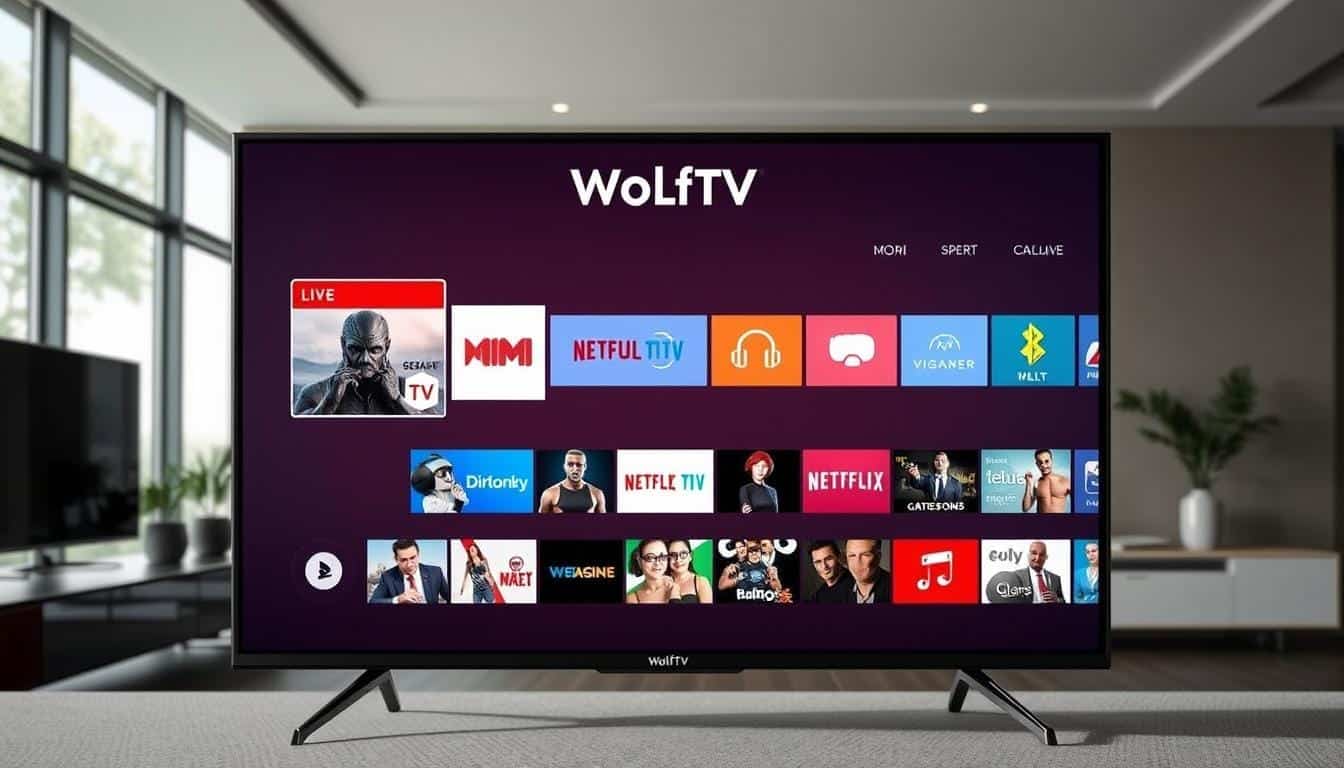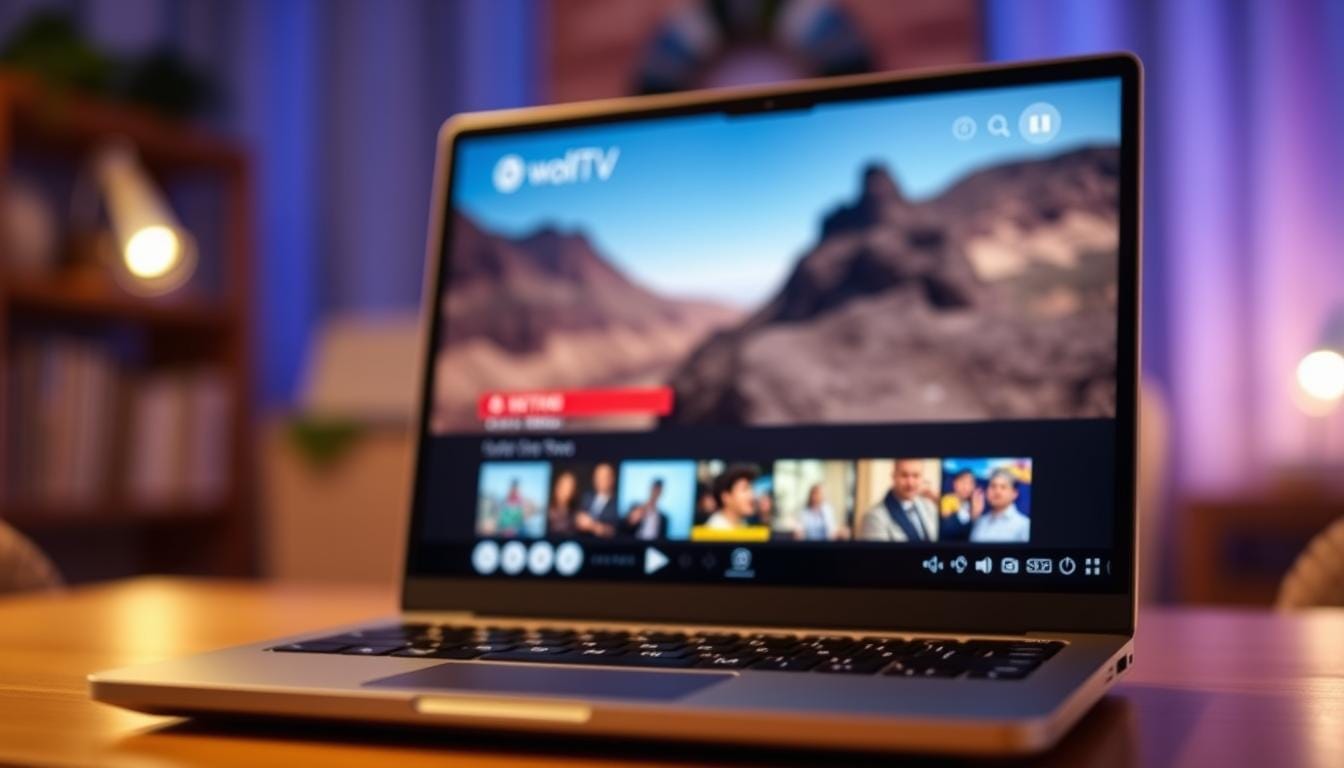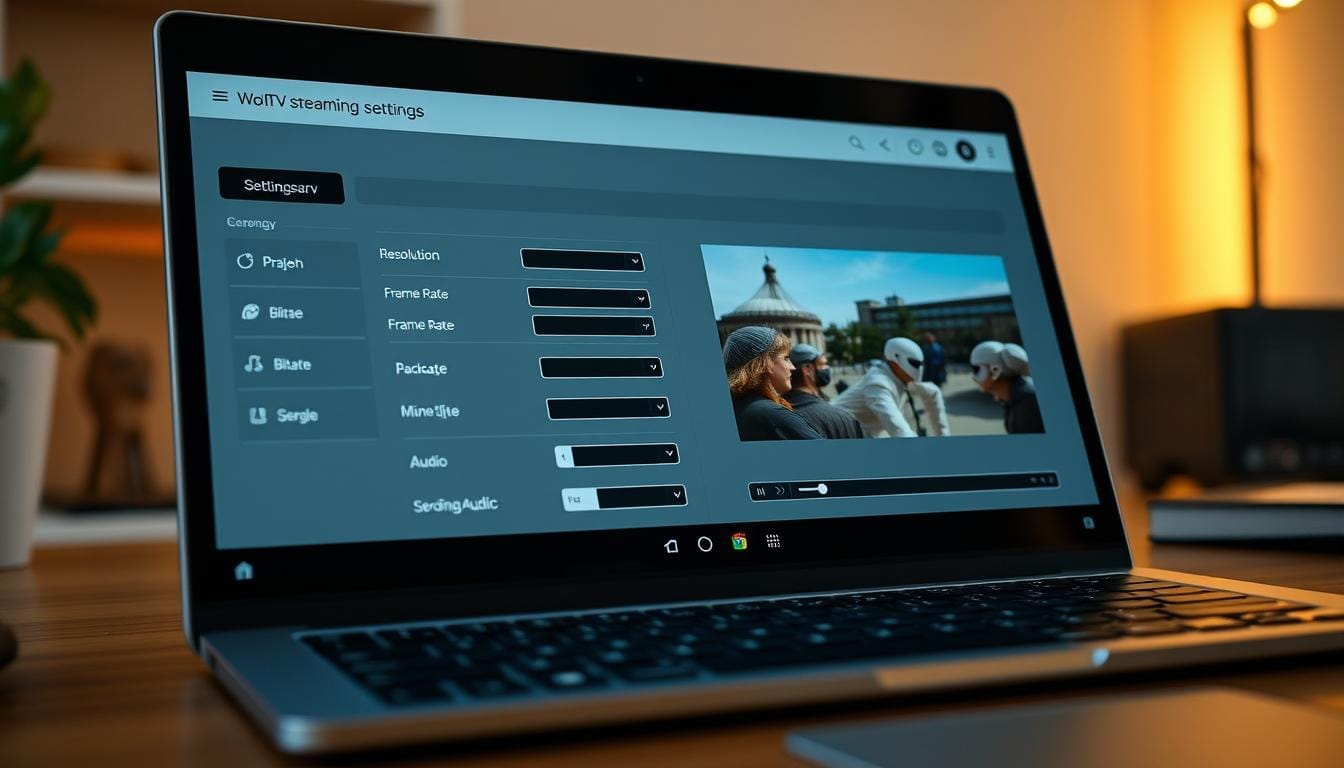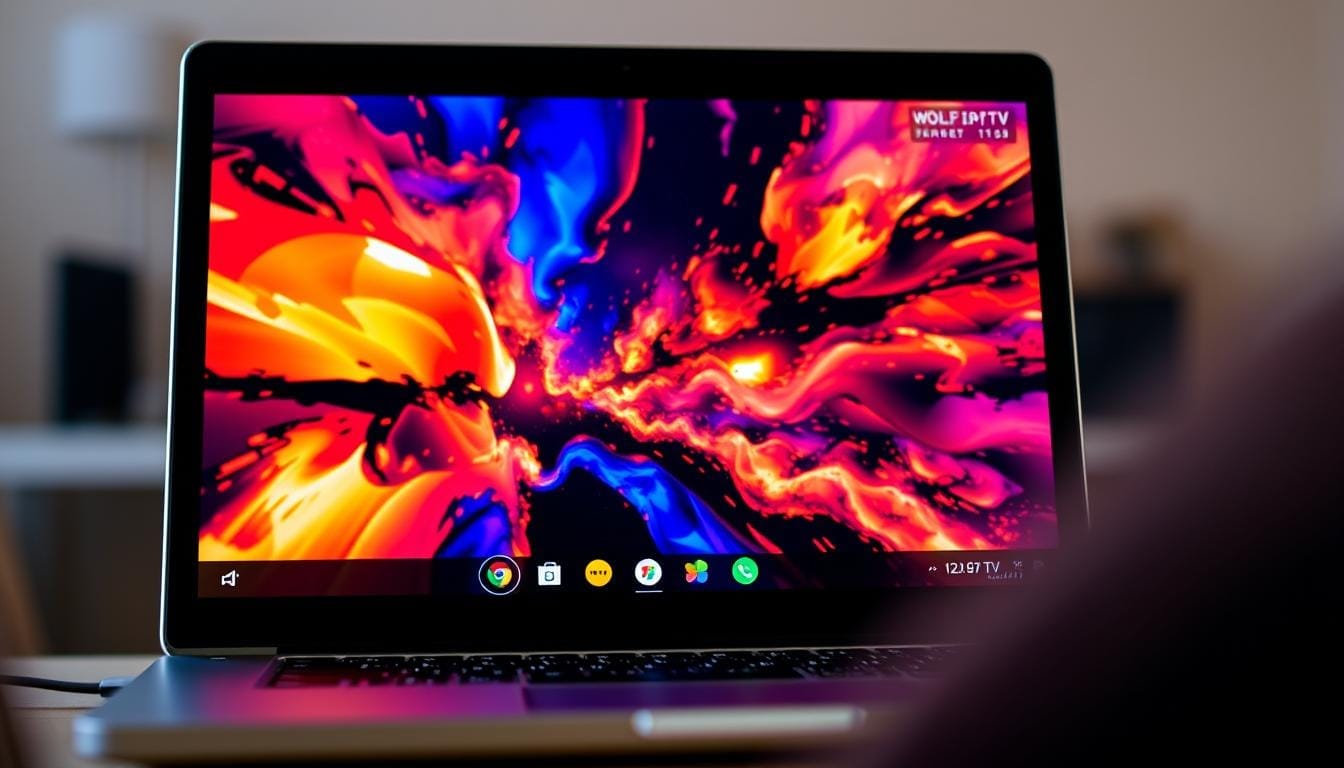IPTV on Chromebook Cache: How to Clear It Quickly
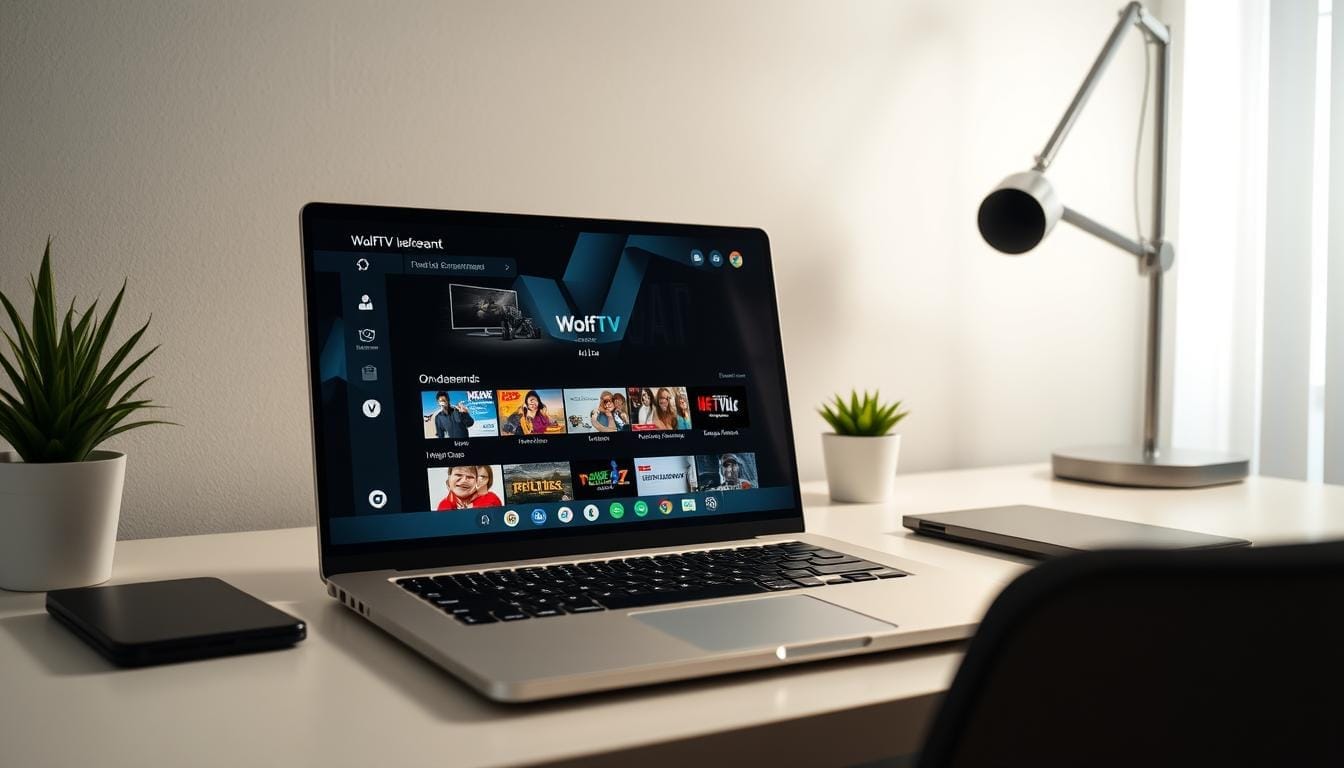
Table of Contents
Have you ever wondered why your streaming experience sometimes feels sluggish or interrupted? Temporary files, often referred to as cache, can accumulate over time and affect your device’s performance. This is especially true when using IPTV streaming services on devices like Chromebooks.
Clearing these files can make a significant difference. It ensures smoother playback and prevents buffering issues. Whether you’re using an IPTV app or accessing a service, maintaining your device’s performance is crucial.
In this guide, you’ll learn simple steps to clear temporary files quickly. By following these instructions, you can optimize your Chromebook for uninterrupted streaming. Let’s dive in and get your device running at its best!
Key Takeaways
- Clearing temporary files improves streaming performance.
- Accumulated cache can cause buffering and interruptions.
- Regular maintenance ensures smoother playback.
- Simple steps can optimize your device for streaming.
- Keep your Chromebook running efficiently for better results.
Introduction to IPTV Streaming and Cache Management
Streaming has become a cornerstone of modern entertainment, especially on lightweight devices. With the rise of digital platforms, accessing your favorite shows and movies has never been easier. One of the most innovative methods is through IPTV streaming, which delivers content directly over the internet.
Chromebooks have emerged as a popular choice for this purpose. Their portability and efficiency make them ideal for using streaming apps. However, to ensure a smooth video experience, proper cache management is essential.
The Rise of IPTV on Chromebooks
Streaming apps like IPTV Smarters Pro have gained traction among users. They offer a user-friendly interface and access to a wide range of content. This makes them a go-to choice for those who want to enjoy their favorite shows without interruptions.
Chromebooks, with their lightweight design and affordability, are perfect for these apps. They provide a seamless way to stream videos, whether you’re at home or on the go. However, to maintain optimal performance, managing temporary files is crucial.
Why Cache Matters for Seamless Streaming
Caching plays a vital role in delivering a smooth video experience. It stores temporary data to reduce loading times and prevent buffering. Without proper cache management, your streaming app may slow down, affecting your overall enjoyment.
An optimized app ensures that your device runs efficiently. For example, IPTV Smarters Pro is designed to handle cache effectively, enhancing your iptv experience. Regular maintenance, like clearing temporary files, can make a significant difference in performance.
“Efficient cache management is the key to unlocking the full potential of your streaming experience.”
In today’s streaming landscape, managing cache is more important than ever. It ensures that your device stays responsive and your content plays without interruptions. For more detailed guidance on clearing cache, check out this comprehensive guide.
Understanding the Role of Cache in IPTV Performance
Buffering and freezing are common problems that disrupt your viewing experience. These issues often stem from temporary files stored on your device. Proper cache management ensures smoother playback and fewer interruptions.
How Caching Improves Streaming Quality
Caching works by preloading data to reduce loading times. This process prevents interruptions during playback. For example, buffer preloading ensures your video continues smoothly, even if your internet speed fluctuates.
Without caching, every pause or skip would require reloading data. This can lead to frequent buffering and a frustrating viewing experience. Efficient cache management keeps your streaming app running at its best.
Common Cache Challenges and Their Impact
Buffering and freezing are often caused by insufficient cache management. Here are some common issues and their effects:
- Network congestion: Multiple devices sharing bandwidth can slow down your connection.
- Poor internet speed: Streaming in HD requires at least 5 Mbps, while 4K needs 25 Mbps.
- Server overload: Free services may struggle to support many users simultaneously.
These problems can amplify if temporary files are not cleared regularly. Minor issues like slow loading can escalate into constant interruptions.
“Proper cache management is the foundation of a seamless streaming experience.”
To avoid these challenges, ensure your device is optimized for streaming. Use tools like Speedtest.net to check your internet speed. Wired connections can also provide a more stable alternative to Wi-Fi.
| Issue | Cause | Solution |
|---|---|---|
| Buffering | Low internet speed | Upgrade your connection or reduce video quality |
| Freezing | Network congestion | Limit devices using the same network |
| Lag | Server overload | Switch to a premium streaming service |
By addressing these issues, you can enjoy uninterrupted streaming. Regular maintenance and proper setup are key to optimizing your viewing experience.
iptv on chromebook cache: Clearing and Configuring Settings
Optimizing your streaming setup involves more than just a good internet connection. Properly managing your settings can significantly enhance your viewing experience. This section will guide you through locating cache settings and adjusting them for optimal performance.
Locating Cache Settings in Your Streaming App
To begin, open your streaming app and navigate to the settings menu. Look for options labeled “Storage” or “Cache.” These sections allow you to manage temporary files stored on your device. Clearing these files can free up space and improve performance.
If you’re unsure where to find these options, consult the app’s help section or user manual. Most apps provide detailed instructions on managing cache. For more advanced settings, you might need to access developer options within the app.
Adjusting Cache Size for Optimal Streaming
Once you’ve located the cache settings, consider adjusting the cache size. A larger cache can store more data, reducing buffering during playback. However, too much cache can slow down your device. Find a balance that works for your streaming habits.
Regularly clearing cache is also essential. This prevents the accumulation of temporary files that can interfere with performance. Most apps offer a “Clear Cache” button for quick maintenance.
“Proper cache management ensures smoother playback and fewer interruptions.”
Before making any changes, verify your internet connection and device status. A stable connection is crucial for seamless streaming. For additional tips on optimizing your setup, check out this comprehensive guide.
By following these steps, you can prevent common streaming issues and enjoy a better viewing experience. For more insights on enhancing your streaming performance, visit this resource.
Step-by-Step Guide to Clearing Your Cache on Your Chromebook
Streaming interruptions can be frustrating, but there’s a simple way to fix them. Temporary files stored on your device can slow things down. By following these steps, you can clear them quickly and improve your experience.
Using Chrome’s Clear Browsing Data Feature
Start by opening Chrome on your device. Click the three dots in the top-right corner to access the menu. Select Settings, then scroll down to Privacy and Security.
Choose Clear Browsing Data. Here, you can select the time range and the types of data to delete. Make sure to check the box for Cached Images and Files. Click Clear Data to complete the process.
Manual Cache Clearing Methods for Better Performance
If you prefer a more hands-on approach, restarting your device can help. This clears temporary files stored in the system memory. Another way is to use keyboard shortcuts like Ctrl + Shift + Delete to open the clear data menu directly.
For advanced users, accessing developer options can provide additional control. Navigate to Chrome://settings/clearBrowserData for more detailed settings. This allows you to manage cache size and frequency of clearing.
“Taking time to clear your cache ensures smoother playback and faster load times.”
By following these steps, you’ll notice a significant improvement in your streaming performance. For more tips on optimizing your setup, check out this comprehensive guide.
Implementing Browser-Based IPTV Solutions
Streaming directly from your browser offers flexibility and convenience, making it a popular choice for many users. Unlike traditional apps, browser-based solutions allow you to access your favorite content without additional downloads. This approach is ideal for those who prefer a lightweight and adaptable setup.
Benefits of Streaming Directly from Your Browser
Using a browser for streaming comes with several advantages. First, it eliminates the need for app installations, saving storage space on your device. Second, it provides greater adaptability, as you can switch between services seamlessly. Third, browser-based streaming often supports multiple subscription plans, making it easier to manage your media access.
Another benefit is the ability to use incognito mode. This feature ensures your browsing history and cache are not stored, which can enhance performance. It’s particularly useful for maintaining privacy while streaming.
Optimizing Browser Cache Settings and Incognito Mode
To get the most out of browser-based streaming, optimize your cache settings. Regularly clearing your browser’s cache can prevent slowdowns and improve load times. This is especially important for high-quality content that requires smooth playback.
Incognito mode is another tool to consider. It prevents temporary files from accumulating, ensuring your browser runs efficiently. This mode is ideal for users who want to avoid interruptions during streaming.
“Optimizing your browser settings can significantly enhance your streaming experience.”
By choosing the right browser and adjusting settings, you can enjoy uninterrupted access to your favorite shows and movies. For more tips on managing your subscription and optimizing performance, explore additional resources.
Leveraging External Storage to Enhance Streaming Performance
Enhancing your streaming setup can be as simple as adding external storage. Devices like SD cards or USB drives can significantly boost your experience by expanding available cache space. This not only improves quality but also ensures smoother playback for your favorite channels.
Benefits of Using External SD Cards or USB Drives
External storage devices offer a practical solution to limited internal memory. By supplementing your device’s cache, you can reduce buffering and enhance speed. This is particularly useful for high-definition content that demands more resources.
Another advantage is flexibility. You can easily switch between devices or upgrade storage capacity as needed. This ensures your setup remains adaptable to changing streaming needs.
Setup Tips for External Cache Storage on Your Chromebook
Configuring external storage is straightforward. Start by inserting your SD card or USB drive into the appropriate port. Navigate to your device’s settings and select the external storage option. Assign it as the default location for cache files.
Here’s a quick guide to help you get started:
| Step | Action |
|---|---|
| 1 | Insert SD card or USB drive |
| 2 | Open device settings |
| 3 | Select external storage |
| 4 | Set as default cache location |
For advanced setups, consider using tools like Kodi IPTV to manage your streaming library efficiently. This can further optimize your experience and ensure seamless playback.
“Optimizing external storage is a game-changer for streaming enthusiasts.”
By following these steps, you can enjoy uninterrupted access to your favorite content. Whether you’re watching live channels or on-demand shows, external storage ensures your setup remains robust and reliable.
Troubleshooting Common Caching and Buffering Issues
Experiencing buffering or freezing during your favorite shows can be a major annoyance. These issues often stem from performance bottlenecks or incorrect settings. By identifying the root cause, you can resolve them quickly and enjoy uninterrupted streaming.
Identifying Performance Bottlenecks and Buffering Causes
Buffering typically occurs when your device struggles to load data fast enough. Common causes include slow internet speeds, network congestion, or insufficient cache space. For example, streaming in HD requires at least 5 Mbps, while 4K demands 25 Mbps.
Another issue is server overload, especially during peak hours between 6 PM and 11 PM. If multiple devices are using the same network, it can further slow down your stream. Make sure your connection meets the minimum requirements for smooth playback.
Quick Fixes to Resolve Buffering and Freezing Issues
Here are some practical steps to address these problems:
- Reboot your router: This clears the data pipeline and often resolves minor issues.
- Adjust your settings: Lower the video quality on your streaming page to reduce bandwidth usage.
- Use a wired connection: Ethernet cables provide a more stable alternative to Wi-Fi.
- Clear your cache: Regularly removing temporary files can free up space and improve performance.
If you’re still facing issues, consider upgrading your internet plan or switching to a premium streaming service. For more advanced troubleshooting, explore IPTV on PC solutions.
“Addressing performance bottlenecks ensures a smoother and more enjoyable streaming experience.”
By following these steps, you can resolve common issues and prevent future interruptions. Regular maintenance and proper setup are key to optimizing your viewing experience.
Emerging Trends in IPTV and Cache Management
The world of streaming is evolving rapidly, bringing new innovations to enhance your viewing experience. As technology advances, the way we manage and optimize our setups is changing. Staying updated with these trends ensures you get the most out of your system.
Innovations in Streaming Technology and Caching
Modern players are designed to handle cache more efficiently, reducing buffering and improving load times. For example, advanced algorithms now sort channels based on your preferences, making navigation faster and more intuitive. This eliminates the clutter often found in traditional cable systems.
Another breakthrough is cross-platform compatibility. You can now access your favorite shows on multiple devices seamlessly. This flexibility ensures your system adapts to your lifestyle, whether you’re at home or on the go.
Future-Proofing Your Streaming Setup
To keep your setup relevant, consider upgrading to modern solutions. Many new players offer personalized recommendations and dynamic channel organization. These features enhance your experience while saving you money by eliminating unnecessary subscriptions.
Regularly updating your system also ensures compatibility with emerging standards. For instance, adopting 4K-ready devices prepares you for higher-quality content. By staying ahead of trends, you can enjoy uninterrupted streaming for years to come.
“Investing in modern technology today ensures a smoother and more enjoyable streaming experience tomorrow.”
By embracing these innovations, you can optimize your setup and stay ahead in the ever-changing world of streaming. For more tips on upgrading your system, explore additional resources.
Conclusion
Maintaining a smooth streaming experience requires attention to detail and regular upkeep. By following the strategies outlined in this guide, such as clearing temporary files and optimizing your settings, you can significantly improve performance. Regularly checking your device and ensuring your internet connection is stable are essential steps to avoid interruptions.
If you encounter persistent issues, don’t hesitate to reach out for additional support. You can contact us at our address, via email, or by calling our support number. Our team is here to provide detailed guidance and help you resolve any challenges.
Taking these steps will lead to a better streaming experience and ensure your setup remains efficient. For more tips on how to enhance your viewing experience, explore our additional resources. Stay proactive and enjoy seamless streaming in the evolving digital landscape.
FAQ
Why is clearing cache important for IPTV streaming?
Clearing cache helps remove outdated or corrupted data, ensuring smoother video playback and reducing buffering issues during your streaming sessions.
How do I locate cache settings in my IPTV app on a Chromebook?
Open your IPTV app, navigate to the settings menu, and look for the storage or cache section. Here, you can manage or clear the stored data.
Can adjusting cache size improve my streaming experience?
Yes, increasing the cache size can reduce buffering by storing more data temporarily, while decreasing it can free up space for better performance on limited storage devices.
What’s the quickest way to clear cache on a Chromebook?
Use Chrome’s “Clear Browsing Data” feature by clicking the three-dot menu, selecting “More Tools,” and then “Clear Browsing Data.” Choose the cache option and confirm.
Does streaming IPTV directly from a browser improve performance?
Streaming via a browser can sometimes enhance performance, especially if you optimize cache settings or use incognito mode to avoid data conflicts.
How can external storage improve my IPTV experience?
Using an external SD card or USB drive can expand storage capacity, allowing more room for cache data and reducing strain on your Chromebook’s internal memory.
What are common causes of buffering in IPTV?
Buffering often results from slow internet speeds, high traffic on the server, or insufficient cache storage. Clearing cache and optimizing settings can help resolve this.
Are there emerging trends in IPTV cache management?
Innovations like adaptive caching and AI-driven storage optimization are shaping the future of IPTV, making streaming more efficient and reliable.

